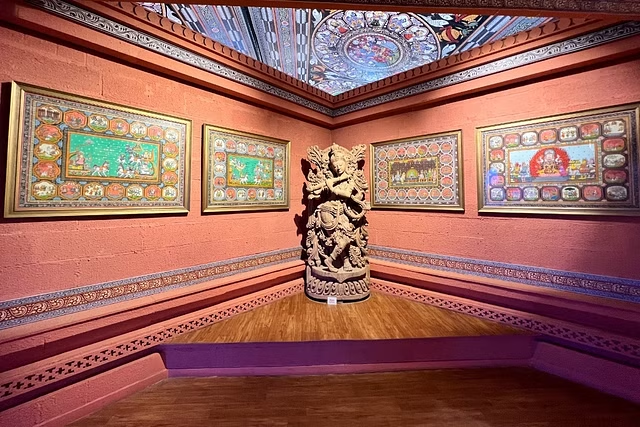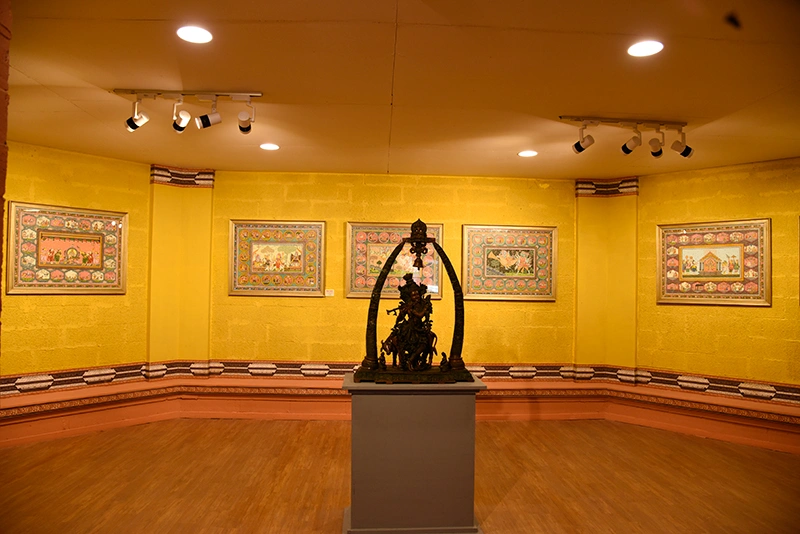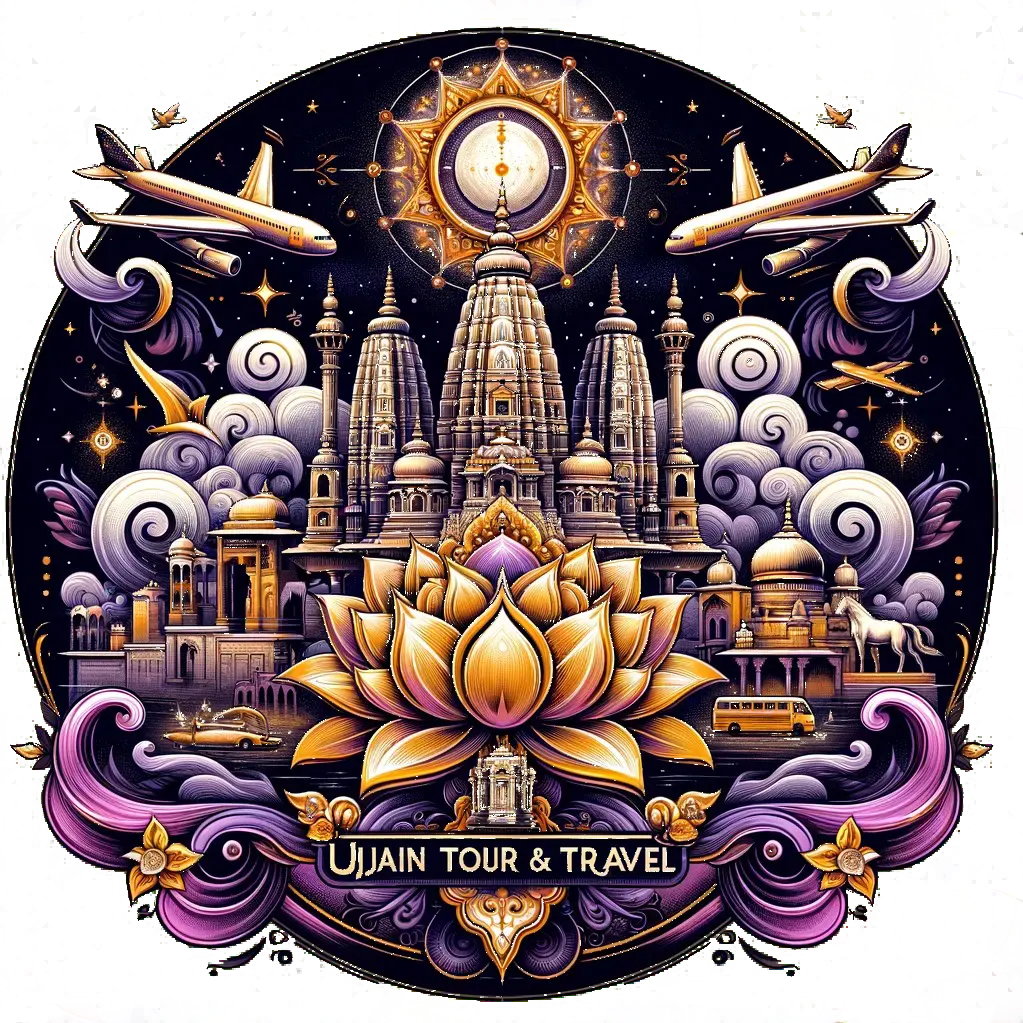
Triveni Museum: A Treasure of Art and History
Situated in the spiritual city of Ujjain, Madhya Pradesh, the Triveni Museum is a relatively new but captivating institution for art and history enthusiasts. Opened in 2016 during the Simhastha Mahaparva festival, the museum seamlessly blends ancient and modern times, showcasing an impressive collection of sculptures, paintings, and artifacts that highlight the rich cultural heritage of the region.

A Modern Marvel with Ancient Connections
Although the Triveni Museum is a recent addition, its roots are deeply tied to Ujjain's long history. For centuries, Ujjain has been a center of learning and artistic expression, from the Maurya to the Gupta Empire. The museum serves as a guardian of this legacy, preserving historical works of art and offering a window into the lives of past generations.
A Name with Deep Symbolism
The name "Triveni" refers to the confluence of three sacred rivers in Hindu mythology—Ganga, Yamuna, and Saraswati. This powerful symbolism reflects the museum’s essence: a fusion of artistic traditions, historical stories, and cultural influences. The museum’s logo, featuring three interlocking lotus flowers, represents three major art traditions: Shaiva, Vaishnava, and Shakti.
Exploring the Collections
Entering the Triveni Museum feels like stepping back in time. The museum's well-curated collection is divided into three main galleries:
- Shaiva Gallery: Focuses on Lord Shiva, featuring sculptures and paintings of his various forms like Bhairava, Nataraja, and Uma Maheshwar from the medieval period.
- Vaishnava Gallery: Dedicated to Lord Vishnu, this gallery displays artworks depicting different forms of Vishnu across styles and periods, including sculptures, paintings, and miniatures.
- Shakti Gallery: Celebrates the divine feminine energy, showcasing sculptures and paintings of goddesses like Durga, Parvati, and Kali, reflecting the artistic representation of the feminine principle in Hinduism.
Beyond the Galleries
The Triveni Museum offers more than just its permanent exhibits. It serves as a cultural hub, hosting:
- Temporary Exhibitions: Special thematic exhibits or works by contemporary artists, giving a broader view of Indian art.
- Lectures and Workshops: Inviting scholars and historians to speak on Indian art and history, adding depth to the visitor experience.
- Educational Programs: Engaging students with interactive programs that make learning about art and history exciting and accessible.
Cultural Impact
The museum's value lies in both its collections and its broader contributions:
- Preserving Heritage: The museum safeguards Ujjain’s cultural treasures, ensuring future generations can connect with the city’s history.
- Promoting Cultural Understanding: By showcasing diverse artistic traditions, the museum fosters an appreciation for India’s artistic heritage.
- Educational Resource: The museum’s collection, along with its programs, serves as an essential educational tool for students and art lovers.
- Boosting Tourism: Triveni Museum has become a notable tourist attraction, drawing visitors and supporting the local economy while raising awareness of Ujjain’s cultural importance.
Future Growth and Challenges
Though successful, the Triveni Museum faces challenges, such as expanding its collection and digital presence. Enhancing interactive exhibits and incorporating technology can improve the visitor experience, making the museum even more accessible.
Bridging Past and Present
The museum acts as a bridge between ancient art forms and the present generation, helping people understand and appreciate their cultural roots. Its future could include collaboration with other institutions, universities, and international museums, enabling exchange programs, joint research, and loan exhibitions.
Embracing Technology
To further its reach, the museum could adopt digital solutions like virtual tours and online exhibitions. A stronger presence on social media could engage wider audiences by sharing upcoming events, new artifacts, and fun facts about the collection.
A Vision for the Future
The Triveni Museum has the potential to become a dynamic cultural hub with interactive workshops, artist talks, film screenings, and performances of traditional arts. These activities could attract not only art enthusiasts but the general public, enriching Ujjain’s cultural scene.
A Legacy in the Making
Although young, the Triveni Museum is shaping its legacy by preserving heritage, fostering cultural understanding, and encouraging artistic exploration. With continued support and innovation, it is on track to become a prominent center of cultural learning and artistic appreciation in India.
In Conclusion
The Triveni Museum offers more than just a collection of artifacts—it provides a window into Ujjain’s soul. By embracing collaboration, technology, and a fresh approach to engaging the public, the museum is poised to inspire future generations and become a beacon of art and history for many years to come.
Explore Other Attractions in Ujjain
Ujjain is a city full of history, culture, and spirituality. After exploring this site, make sure to visit these other remarkable attractions:
- Sandipani Ashram: A sacred site where Lord Krishna, Balram, and Sudama are believed to have received their education. The ashram's peaceful surroundings make it a spiritual haven.
- Kaliadeh Palace: An architectural marvel on the banks of the Shipra River, showcasing Persian-style design and offering a glimpse into Ujjain's royal history.
- Vikram University: Named after the legendary King Vikramaditya, this renowned institution is a landmark of education and culture in Ujjain.
- Jantar Mantar: An ancient observatory that highlights India’s advanced astronomical and timekeeping expertise.
- Bhartrihari Caves: Explore the legendary caves associated with Bhartrihari, known for their historical significance and tranquil environment.
- Main Ghats: Visit the sacred ghats along the Shipra River, where rituals, prayers, and a serene atmosphere create a divine experience.
